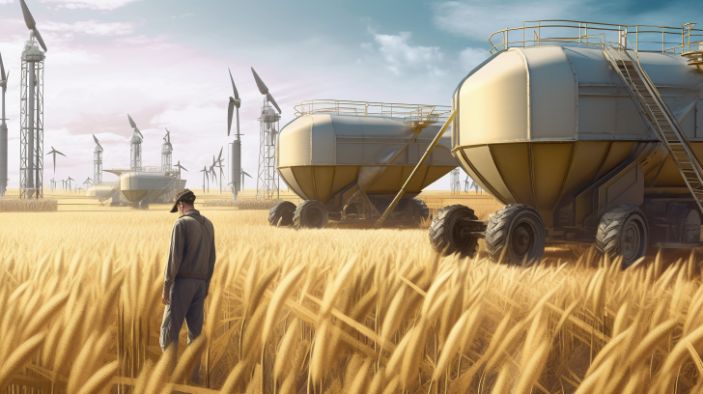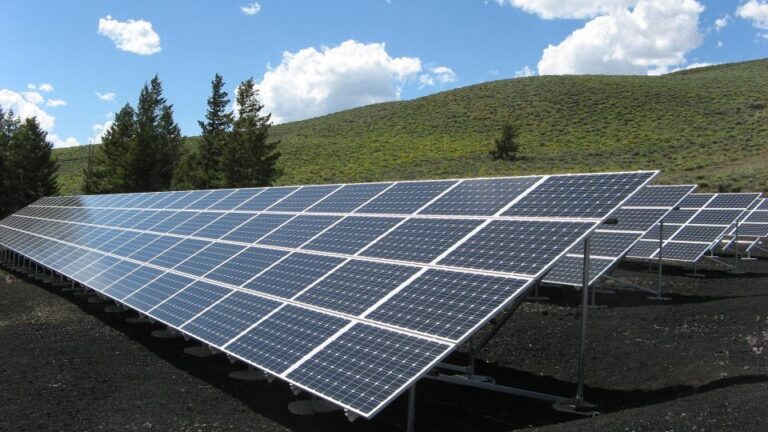Bioenergy Economics: A Comprehensive Guide
Bioenergy is increasingly important in today’s world for sustainable energy and economic growth. It offers a reliable, locally produced energy source that reduces reliance on fossil fuels and imports, enhancing energy security. Economic factors such as production costs, income sources, and government policies play a crucial role in the success of bioenergy projects. Successful examples, like a German biogas plant and a Brazilian ethanol plant, highlight the potential for profitability and sustainability. With technological advancements and a growing demand for renewable energy, bioenergy has a promising future despite challenges like competition from other renewables and feedstock availability.
Table of Contents
Bioenergy is defined as energy obtained from organic materials, such as vegetation and creatures. Because of its potential to cut greenhouse gas emissions and combat climate change, this renewable energy source has received a lot of attention in recent years. Bioenergy is a diverse energy source that may be utilized for heating, power generating, and transportation.

The Importance of Bioenergy in Today’s World
Because of the growing demand for sustainable energy sources, bioenergy is becoming increasingly significant in the modern world. The use of bioenergy can help lessen our reliance on finite fossil fuels, which contribute to climate change. Bioenergy is also a dependable energy source that may be generated locally, lowering the demand for energy imports and enhancing energy security.
Bioenergy can also assist communities economically. Bioenergy generation has the potential to produce jobs in rural regions while also stimulating economic growth. Furthermore, the usage of bioenergy can help individuals and companies lower energy expenditures, making energy more cheap and accessible.
Economic Considerations in Bioenergy
Bioenergy is a renewable energy source that has gained popularity in recent years owing to its ability to reduce greenhouse gas emissions while also providing energy security. However, bioenergy’s economic sustainability is a major aspect determining its success. In this article, we will look at the economic factors that influence bioenergy, as well as the role of policy and regulation in bioenergy economics.
A Summary of Economic Factors Influencing Bioenergy
The economic aspects influencing bioenergy may be divided into two categories: production costs and income sources. Capital investment, operating expenses, and feedstock costs are all included in the production cost. Electricity sales, gasoline sales, and government subsidies are all sources of revenue.
The cost of production is a significant aspect in determining bioenergy’s economic feasibility. The capital expenditure necessary to establish a bioenergy facility is substantial, and it varies depending on the technology chosen. A biomass power plant, for example, requires a larger capital investment than a biogas facility. A bioenergy plant’s operational expenses include personnel, maintenance, and repair. Feedstock expenses are also a key component of manufacturing costs. Feedstock costs vary based on the type of biomass utilized and its availability.
Electricity sales, fuel sales, and government subsidies are all income streams for bioenergy. The major source of income for most bioenergy facilities is money from power sales. Electricity prices vary according on market circumstances and the type of technology utilized. Fuel sales revenue is another source of income for bioenergy facilities. The price of biofuels is affected by the price of fossil fuels as well as the demand for biofuels. Subsidies from the government are also an important source of revenue for bioenergy projects. Subsidies are provided by the government to encourage the adoption of renewable energy sources and to minimize greenhouse gas emissions.
Successful Bioenergy Projects: Profitable Examples
Bioenergy projects have received a lot of interest in recent years because of their promise to generate sustainable energy while lowering greenhouse gas emissions. Many viable bioenergy initiatives have arisen, paving the way for others to follow. Here are some case studies of successful bioenergy initiatives, as well as the variables that contributed to their success.
Example 1: German Biogas Plant
A biogas plant in Germany is an example of a successful bioenergy project. From organic waste, the facility generates biogas, which is subsequently utilized to create energy and heat. Because of the increased demand for renewable energy in Germany and the availability of organic waste as a feedstock, the facility has proven profitable. The facility has also benefited from technological improvements that have made the process of manufacturing biogas more efficient.
Example 2: Ethanol Plant in Brazil
Another successful bioenergy project is a Brazilian ethanol plant. The facility converts sugarcane into ethanol, which is then utilized as a car fuel. Because of the huge demand for ethanol in Brazil and the availability of sugarcane as a feedstock, the facility has been lucrative. The facility has also profited from technological advances that have made the ethanol production process more efficient.
Success Contributing Factors
A variety of factors influence the success of bioenergy initiatives. The availability of feedstock is one of the most essential issues. To be viable, bioenergy plants require a continuous and predictable supply of feedstock. Climate, location, and farming techniques may all have an impact on feedstock supply.
The market demand for renewable energy is another aspect that contributes to the success of bioenergy initiatives. Bioenergy projects are more likely to be lucrative in areas where renewable energy sources are in great demand. Governments can also help to create a favorable market environment for bioenergy projects by offering incentives and subsidies.
Future Outlook for Bioenergy
Bioenergy has the potential to play a bigger role in energy generation in the future. Bioenergy is becoming an increasingly appealing choice as the globe shifts toward renewable energy sources owing to its capacity to provide a consistent and sustainable source of energy.
Emerging technologies and advances in bioenergy are also adding to its growing potential. One example is the utilization of algae as a biofuel source. Algae is a crop that can be cultivated in enormous quantities and has the potential to yield more energy per acre than typical biofuel crops. Furthermore, technological developments are enabling the creation of more efficient and cost-effective bioenergy production technologies.
However, the bioenergy business has both problems and chances for expansion. One significant problem is competition from other renewable energy sources such as wind and solar. These sources have grown more cost-effective and are frequently preferred by policymakers and investors.
Another issue is the scarcity of feedstock for bioenergy production. While there are numerous possible feedstock sources, such as agricultural waste and forestry residues, other industries, such as agriculture and construction, compete for these resources.
Despite these limitations, the bioenergy business offers chances for expansion. The growing need for renewable energy sources, along with technological improvements, is providing a suitable climate for bioenergy to thrive. Furthermore, the development of new and novel bioenergy products, such as bio-based chemicals and materials, is expanding the industry’s markets and income streams.
Conclusion
Bioenergy has the potential to significantly contribute to satisfying the world’s energy demands while lowering greenhouse gas emissions. However, the bioenergy sector’s development is strongly reliant on economic variables such as government policy, market demand, and technical advances.
Second, the economics of bioenergy are complicated, necessitating a full grasp of the different aspects influencing its feasibility. These include feedstock, transportation, processing, and distribution costs.
Third, the bioenergy industry offers enormous investment and research prospects. Governments, private investors, and research organizations should work together to create creative solutions that make bioenergy more economically feasible and sustainable.
Recognizing the relevance of economics in the bioenergy sector is critical. It will be difficult to build sustainable and lucrative bioenergy projects without a good grasp of the economic issues that determine bioenergy viability.
As a result, more research and investment in the bioenergy sector are required. Governments should create incentives for private investors to participate in bioenergy projects, and research institutes should concentrate on creating novel solutions to make bioenergy more economically feasible.






